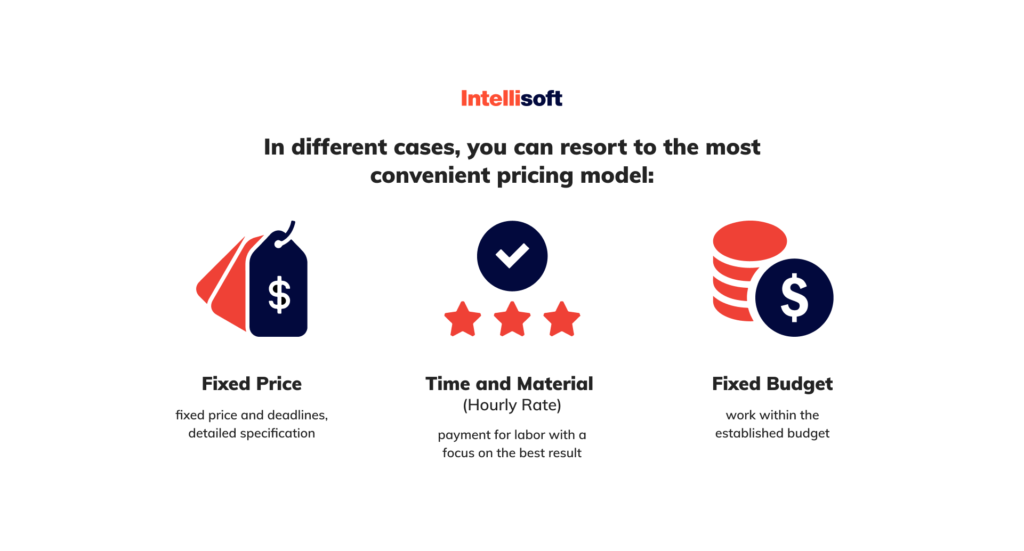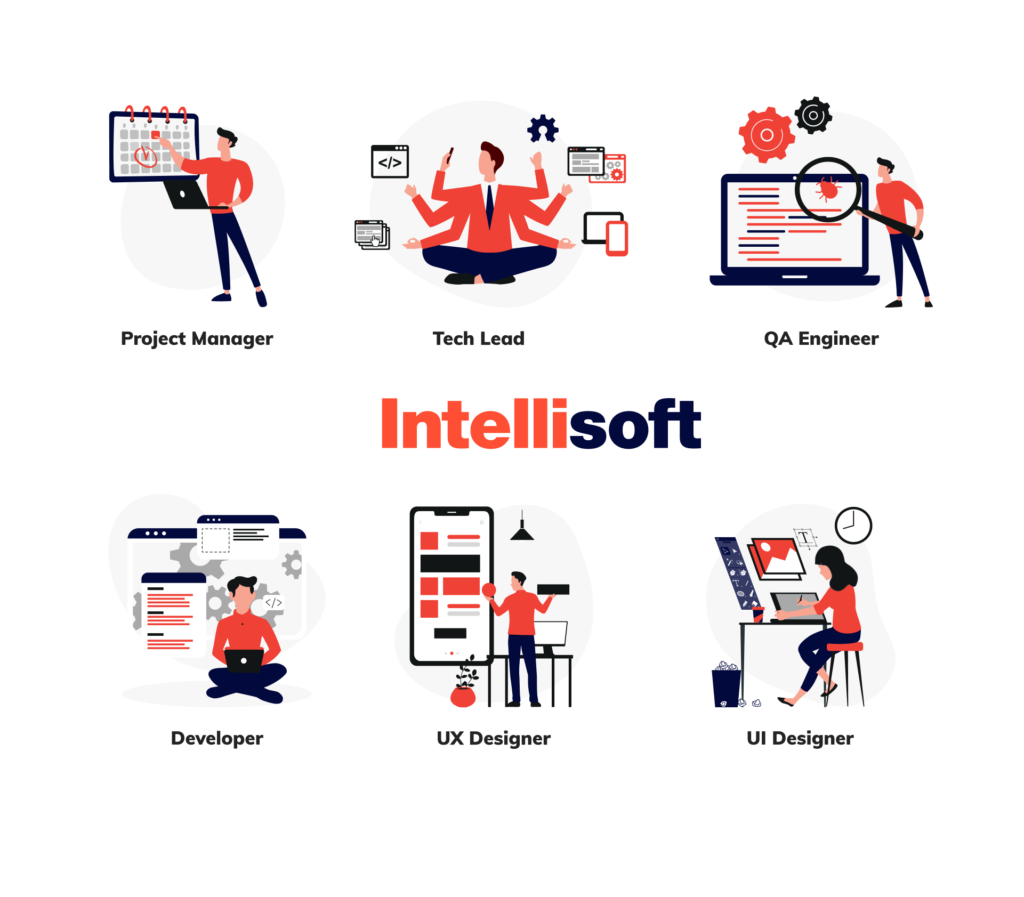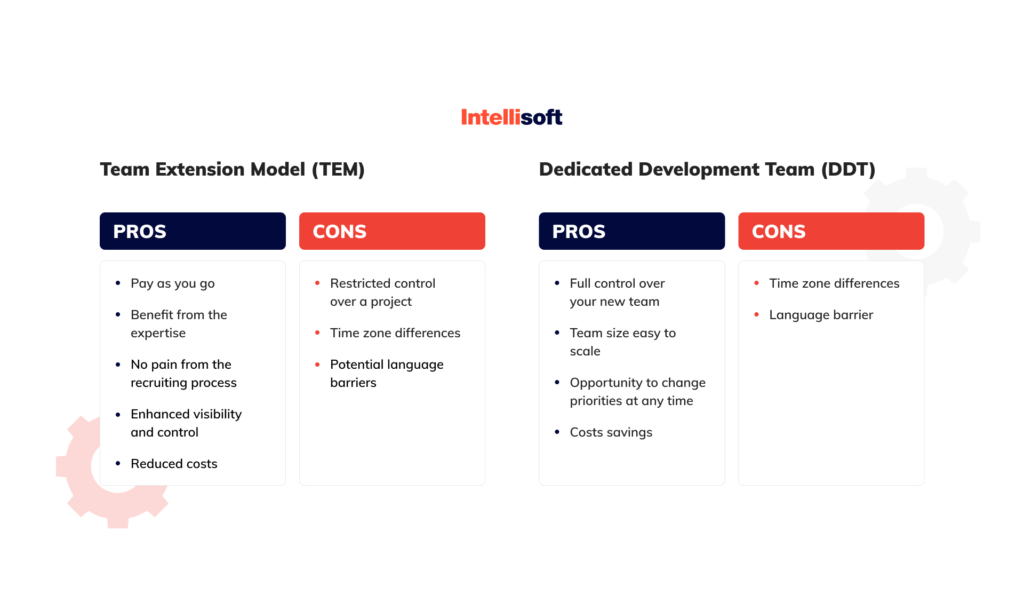Are you finding development team extension tough? Whether you’re looking for experienced software developers or talented UI/UX designers, the hurdles of managing recruitment, payroll, and keeping your team engaged can be daunting. Scaling a team is a crucial milestone for any growing business, whether you’re a startup making your mark or an established player in the industry. This challenge often arises due to increasing project complexity, the need for specialized skills, or simply the pressure of a growing workload.
Take Spotify, for instance—a company now synonymous with music streaming worldwide. They began with a small, tight-knit development team but have since grown into a vast network of tech experts spread across the globe. Spotify’s success lies in their ability to adapt their team structure as they expanded, prioritizing agility, ownership, and a relentless focus on quality. Each of their teams operates like an independent “mini-startup,” retaining a high degree of autonomy and fostering continuous innovation even as they scaled.
These success stories highlight the potential of efficient scaling. However, scaling isn’t merely about adding more people to your team. It’s about smart, strategic growth—streamlining processes, boosting collaboration, and ensuring that product quality remains top-notch. One effective strategy to achieve this is through software development team extension.

Team extension services have proven their worth, with the global outsourcing market hitting $85.6 billion in 2018 and continuing on an upward trend. Interestingly, 24% of companies turn to outsourcing to boost efficiency, while 18% seek to tap into expert talent.
So, how can you tell if team extension is the right move for you? And which model would best fit your needs? To navigate the various options and industry jargon, we recommend reading our detailed article on team extension meaning, which breaks it all down for you.
Table of Contents
What Processes Can Be Outsourced?
In general, businesses are better off with outsourcing as their preferred business model. Several reasons exist to expand your team. Most often, companies resort to development team extension in case:
- they lack the right specialists
- of the high workload
- they need effective and unique software solutions
- external expertise is required
Okay, but what are the processes that should be outsourced? You cannot outsource just everything. Implementation of a long-term project is one example of a process that can be outsourced. Short-term development projects are not typically outsourced as they are implemented using the Fixed Price pricing model. Long-term projects, such as implementing SAP or ERP systems, have to be outsourced to a specialized IT company for the reasons mentioned in this article. An external provider will do the job faster, and its services will cost less than the in-house staff expansion. Non-core business activities can be outsourced while delegating core business activities can be somewhat risky.
If your company plans to outsource software development, bear in mind that not only IT specialists but the project manager, analyst, and tester are involved in the process. For effective cooperation, their duties must be carried out either on the customer’s side or the side of the outsourcing company.
Advantages of Software Outsourcing
As credible sources report, ⅓ of small businesses currently outsource their business processes. Would they do it without realizing the amazing perks they can obtain?
Experienced staff
There is no need to look for qualified specialists in the labor market or train your new staff. Experts from the outsourcing company are ready to work, having relevant experience and the right skills for your project. In addition, the employer won’t have a headache associated with dismissing an employee.
High quality
Attracted IT specialists take over the entire project, from the business process survey to the system maintenance. The only thing that is required from you is comprehensive interaction and assistance. It will help to achieve the best results in the shortest possible time.
Various price models
In different cases, you can resort to the most convenient pricing model:

You can find the cheapest offers in the countries of Latin America, Eastern Europe, and Asia. India, Mexico, the Philippines, Ukraine – they all offer great dedicated teams. Their pool of talents only keep on growing. For instance, in Ukraine, they have roughly 165,000 IT experts, and this number is expected to go up by 125% by 2025.
Disadvantages of Software Outsourcing
Such a type of software development team extension can be more expensive if applied regularly. Usually, the involvement of a specialized development company from the outside is cheaper than building an internal team. The employer saves on wages, tax deductions, management, etc. If IT outsourcing services are required constantly, it’s worth thinking about the feasibility of expanding the staff.
Certain problems in communication may arise. Some employers believe that it might take a while for outsourced teams to accomplish the project as there might be difficulties in explaining all the nuances. However, in many cases, this is the fault of the client. Thus, finding time to discuss all aspects with outsourced teams is critical.
What Does a Development Team Look Like?
Each member of the software development team is an expert in a particular field and has a certain professional authority. Responsibility for the result is distributed among specialists, which allows you to implement products without compromising their final quality quickly.

A dedicated development team consists of the following specialists:
- Project Manager
This person is responsible for the development, maintenance, and delivery of design work. A project manager is also fully responsible for the result and financial risks. Work on the project begins with this expert setting tasks and monitoring quality and efficiency.
- Tech lead
The competencies of a tech lead include the ability to select and apply an appropriate software development methodology, whether Agile, Scrum, or DevOps. The Technical Manager deals with the following aspects of collaboration:
- Responsible selection of third-party software for the project.
- Recommendations for choosing a specific algorithm or architectural solution.
- Determination of technical characteristics in production processes.
- QA Engineer
They participate in the verification of the result. The systematic approach of the QA specialist allows you to test both program code and user experience maps. Also, a crucial aspect of this specialist’s activities is planning, that is, the ability to draw up a test plan, follow it, and make reports on the drawn-up plan.
- Developer
This pro is engaged in the production of software algorithms. This role is often divided into two parts:
- Back-end developer — developer of software and complex software. They deal with the “front” of a site or app, meaning design and coding.
- Front-end developer – developer of the client part of the user. Front-end development stands for everything on the server-side of a site or app, such as vital data.
- User Experience (UX) Designer
This one is engaged in the creation of user experience maps. This position explores and evaluates how users feel about the developed software. They determine how easy it is to use software, its perceived value, and usefulness.
- User Interface (UI) Designer
This professional is engaged in the production of the graphical components. This expert develops the visual part of the user interface. The UI designer’s main tasks are intuitive perception, simplicity, usability, and software interface aesthetics. This position is important as visual information can be processed 60,000 times faster than text and is simpler to memorize.
Comparing a Team Extension and a Dedicated Team
To begin with, in both models, your company benefits from a worldwide talent pool since your choice is not limited to specialists from your region. It means that with outsourcing, you get immediate access to some of the best IT professionals you can find.
Team Extension Model
What team extension means? It is all about adding a lacking skillset to your in-house development team, keeping strategic competencies fully inside your company. This model is based on a time and materials contract.
With a team extension model, your company can minimize the costs associated with ingestion, payroll, and project management. This model is also scalable. In addition, the complete shift of responsibility allows you to reduce formalities with employment and focus on your core business activities.
Dedicated Team Model
A dedicated team model is a type of outsourcing when you hire the entire remote extended development team and outsource your project to them. The outsourcing company you choose creates a special team, which, in particular, includes a project manager. It reduces the need for practical management on the client’s side.
A dedicated development team model implies more than development team extension. A software service provider is deeply involved in the development process from A to Z, meaning business analytics, design, UI/UX design, quality assurance (QA), project management, support, and maintenance.
If both models have more or less similar advantages, which model should you choose? Let’s look at a small comparison of these two models.

Costs and Liabilities
At first glance, an extended team model and a dedicated team look similar. In both cases, a service provider is responsible for recruiting software developers. However, in the dedicated team model, the supplier also takes care of office maintenance, purchasing software and hardware licenses, training employees, etc. In addition, they care about the overall motivation of the developers and the results.
Project Management
In the software development team extension model, the client is responsible for managing their project, even if the product is created by external employees. An internal project manager reduces the client’s obligations and places full responsibility for project management on the supplier.
One more thing to consider is a vendor management system (VMS). This software suite assists with taking care of the processes involved in the end-to-end vendor management process, from primary contact to closure of a deal. An experienced software provider already has several similar partnerships in their portfolio, and they know how to achieve the goal.
Relationship with an Outsourcing Company
Mutual trust and understanding are two keys to successful cooperation. When it comes to dedicated development teams, partners establish long-term relationships. It all allows avoiding frustration and inconvenience.
In the team extension model, the relationship does not matter that much. It is usually limited to simply providing specialists who should accomplish the project before the agreed deadline. That relationship ends as soon as the last line of code is entered.
Beginning of Cooperation
In the team extension model, it takes a little less time to start cooperation than in the case of a dedicated team. In this case, however, the risk is high that you won’t be able to pinpoint the candidate’s profiles and tech expertise. Moreover, your internal staff may lose time educating new colleagues.
If we have a look at the dedicated team, an outsourcing agency is solely responsible for building a team for you from A to Z. It involves recruiting and training specialists, as well as scaling the team to meet your requirements and guaranteeing smooth management of the entire process. Your partner should determine the project’s scope clearly and offer its functionality based on your objectives.
Ideas, Skills, and Knowledge Base
The new extended team may lack understanding of your project to be as innovative and motivated as full-time, in-house employees. Extended teams have impressive skills and knowledge, but it is not always enough to meet all your project’s unique requirements. However, if you choose a dedicated team, a contractor will establish a close relationship with your company that allows digging deeper into your business. No matter which model you choose, a good software development partner will offer initiatives that can give your company a competitive advantage.
You Might Also Like:
- Five Things to Look for in an Ideal IT Offshoring Destination
- How to Overcome Risks of Outsourcing?
- Different Approaches to Team Effectiveness
- Factors to Consider When Hiring an Outsourced Developer
- How to Sign a Contract with an IT Outsourcing Agency
Final Hints for Choosing a Model That Would Fit Your Business
Every company has its own unique approach to developing software. That’s why software outsourcing companies offer multiple models that fit the needs of different projects.
With the expansion of staff and the models of a dedicated team, you can take advantage of the best technical skills in IT. When you hire dedicated developers, you may expect them to accumulate skills and experience in your narrow niche. Ideally, they should be integrated with your internal team as a part of your company. Based on your business objectives, you can scale your extension team up or down later.
If you have doubts or concerns about outsourcing services, Intellisoft is ready to offer free consultation from the best industry experts. Before cooperating with our software developers, provide a detailed description of your project, requirements, goals, deadline, and budget constraints. First, let us share some basic lessons with you.

Lesson #1: Structure within a team should not limit growth.
Lesson #2: You need to plan the team expansion and adapt the processes clearly.
Lesson #3: You need to hire special engineers in a startup.
Conclusion
Arguments “for” outsourcing software are much more apparent than arguments “against.” Therefore, many companies regularly turn to external specialists. However, in some organizations, decisions to invite third-party developers are rather time-consuming and painful. Nevertheless, Western experience and successful cooperation with contractors convince even once avid opponents of the outsourcing benefits. Perhaps, it is time for you to expand your IT team.
How to set up an extended team?
- Planning. Determine the project scope. Define the roles necessary to carry out this project, as well as skills and expertise required. For instance, specify programming languages that you will need to implement your idea.
- Applicant screening. Study the applicant profiles and portfolios. The outsourcing company should provide you with some samples of work or opportunity to contact candidates for interviews.
- Staff onboarding. After hiring the most suitable candidates, assemble and onboard them. Make sure they adapt well and get in touch with other team representatives.
- Discuss their tasks with them.
- Scaling. In case project requirements change, accommodate them in the extended team model. At any time, it’s possible to hire new team members or dissolve experts you no longer need as their job is done.
- Support. Check the quality of every step if you really want to get involved or trust this part to the project manager and auditors offered by the outsourcing company.










